Grow Romanesco Cauliflower from Seed and unlock the secrets to cultivating this stunning, fractal vegetable right in your own backyard! Have you ever seen a Romanesco cauliflower at the farmer’s market and been absolutely mesmerized by its intricate, almost alien beauty? I know I have! It’s not just a pretty face, though; this unique vegetable boasts a delicious, nutty flavor that’s milder than regular cauliflower.
For centuries, Romanesco cauliflower has been a prized vegetable, particularly in Italy, where it’s believed to have originated. Its distinctive geometric pattern, a natural example of a Fibonacci sequence, has fascinated mathematicians and artists alike. But don’t let its complex appearance intimidate you!
Many gardeners shy away from attempting to grow Romanesco Cauliflower from Seed, thinking it’s too difficult. But I’m here to tell you that with a few simple tricks and a little patience, you can successfully cultivate this extraordinary vegetable. Imagine the satisfaction of harvesting your own Romanesco, knowing you nurtured it from a tiny seed to a culinary masterpiece. Plus, growing your own produce is a fantastic way to ensure you’re eating fresh, healthy, and pesticide-free food. This DIY guide will provide you with all the essential tips and hacks you need to succeed, from seed starting to harvesting, ensuring you enjoy a bountiful crop of these fascinating florets. Let’s get started!
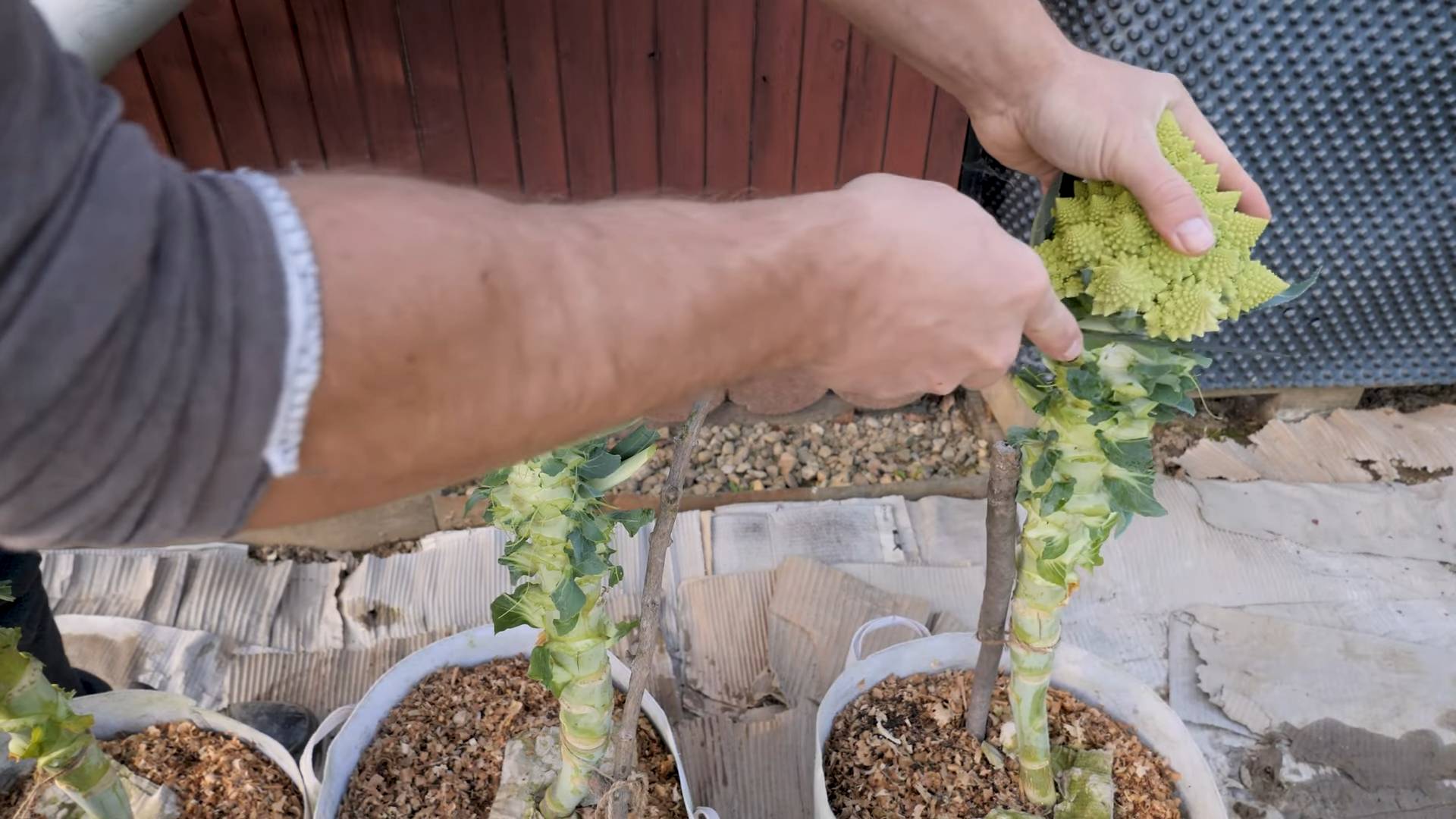
Growing Romanesco Cauliflower from Seed: A Step-by-Step Guide
Okay, so you want to grow Romanesco cauliflower from seed? Awesome! It’s a bit more challenging than your average broccoli, but the reward – that stunning, fractal-patterned head – is totally worth it. Trust me, your garden (and your dinner plate) will thank you. I’ve broken down the process into manageable steps, so let’s get started!
Choosing the Right Romanesco Variety
First things first, let’s talk varieties. While “Romanesco” is the most common name, you might see a few different cultivars. They’re all pretty similar, but here’s a quick rundown:
* ‘Natalino’: This is a popular choice, known for its good flavor and relatively early maturity.
* ‘Veronica’: Another reliable variety, producing beautiful, tightly packed heads.
* ‘Green Goddess’: This one is a bit less common, but it boasts a vibrant green color and a slightly milder flavor.
Honestly, you can’t go wrong with any of these. Just pick one that’s readily available in your area and sounds appealing to you.
Timing is Everything: When to Start Your Seeds
Romanesco cauliflower needs a long growing season, but it doesn’t like extreme heat. That means timing is crucial. I usually aim for two main planting windows:
* Spring Planting: Start seeds indoors 6-8 weeks before the last expected frost. This will give you a summer harvest.
* Fall Planting: Start seeds indoors in mid-summer (around July or August), for a fall or early winter harvest. This is often the better option, as Romanesco thrives in cooler temperatures.
To figure out the exact dates for your region, check your local frost dates online or consult with your local garden center.
Starting Your Seeds Indoors: A Detailed Guide
Okay, let’s get our hands dirty! Here’s how I start my Romanesco seeds indoors:
1. Gather Your Supplies:
* Seed starting trays or small pots (I prefer trays with individual cells)
* Seed starting mix (this is lighter and more sterile than regular potting soil)
* Romanesco cauliflower seeds
* Spray bottle filled with water
* Heat mat (optional, but helpful for germination)
* Grow lights (essential for strong seedlings)
* Labels and a permanent marker
2. Prepare Your Seed Starting Trays: Fill each cell or pot with seed starting mix, leaving about half an inch of space at the top. Gently tap the tray to settle the soil.
3. Sow the Seeds: Make a small indentation (about ¼ inch deep) in the center of each cell. Drop 2-3 seeds into each indentation. This increases your chances of at least one seed germinating.
4. Cover the Seeds: Gently cover the seeds with seed starting mix. Lightly pat the soil down.
5. Water Thoroughly: Use your spray bottle to thoroughly moisten the soil. You want it to be damp, but not soggy.
6. Provide Warmth: Place the seed starting tray on a heat mat, if you’re using one. This will help speed up germination. The ideal soil temperature for Romanesco germination is around 70-75°F (21-24°C).
7. Provide Light: Place the tray under grow lights. Keep the lights on for 14-16 hours per day. Position the lights a few inches above the soil surface. As the seedlings grow, you’ll need to raise the lights accordingly.
8. Monitor Moisture: Check the soil moisture daily. Keep the soil consistently moist, but not waterlogged. Use your spray bottle to water as needed.
9. Thin the Seedlings: Once the seedlings have emerged (usually within 5-10 days), thin them to one plant per cell. Choose the strongest, healthiest-looking seedling and snip off the others at the soil line with small scissors. Don’t pull them out, as this can disturb the roots of the remaining seedling.
10. Harden Off the Seedlings: About a week before you plan to transplant the seedlings outdoors, you’ll need to “harden them off.” This means gradually exposing them to outdoor conditions to help them acclimate. Start by placing the seedlings outdoors in a sheltered location for a few hours each day, gradually increasing the amount of time they spend outside. Protect them from direct sunlight and strong winds.
Preparing Your Garden Bed: Soil and Location
Romanesco cauliflower needs a sunny location with well-drained soil. I aim for at least 6 hours of direct sunlight per day. Before transplanting, prepare your garden bed by:
1. Clearing the Area: Remove any weeds, rocks, or debris from the planting area.
2. Amending the Soil: Romanesco cauliflower is a heavy feeder, so it needs rich, fertile soil. Amend the soil with plenty of compost or well-rotted manure. This will improve drainage, add nutrients, and help retain moisture.
3. Checking the pH: Romanesco prefers a soil pH of 6.0-7.0. You can test your soil pH with a soil testing kit. If your soil is too acidic, add lime to raise the pH. If it’s too alkaline, add sulfur to lower the pH.
4. Creating Raised Beds (Optional): If your soil is poorly drained, consider creating raised beds. This will improve drainage and prevent root rot.
Transplanting Your Seedlings Outdoors
Once your seedlings are hardened off and the danger of frost has passed (or the weather has cooled down for a fall planting), it’s time to transplant them into your garden.
1. Choose a Cloudy Day: Transplanting on a cloudy day will help reduce stress on the seedlings.
2. Dig Holes: Dig holes that are slightly larger than the root balls of your seedlings. Space the holes about 18-24 inches apart.
3. Gently Remove Seedlings: Carefully remove the seedlings from their cells or pots. Gently loosen the roots if they are tightly bound.
4. Plant the Seedlings: Place each seedling into a hole, making sure the top of the root ball is level with the soil surface.
5. Backfill with Soil: Fill the holes with soil, gently firming it around the seedlings.
6. Water Thoroughly: Water the seedlings thoroughly after transplanting.
7. Mulch: Apply a layer of mulch around the seedlings to help retain moisture, suppress weeds, and regulate soil temperature. I like to use straw or wood chips.
Caring for Your Romanesco Plants: Watering, Fertilizing, and Pest Control
Now that your Romanesco plants are in the ground, it’s important to provide them with proper care.
* Watering: Romanesco cauliflower needs consistent moisture, especially during head formation. Water deeply and regularly, especially during dry spells. Aim for about 1-1.5 inches of water per week. Avoid overhead watering, as this can promote fungal diseases.
* Fertilizing: As I mentioned, Romanesco is a heavy feeder. Fertilize your plants every 2-3 weeks with a balanced fertilizer or a fertilizer specifically formulated for vegetables. Follow the instructions on the fertilizer package. You can also side-dress with compost or well-rotted manure.
* Weed Control: Keep the area around your Romanesco plants free of weeds. Weeds compete with the plants for water and nutrients. Hand-pull weeds regularly or use a hoe to cultivate the soil.
* Pest Control: Romanesco cauliflower is susceptible to several pests, including cabbage worms, aphids, and flea beetles. Here are some tips for controlling these pests:
* Cabbage Worms: These green caterpillars can quickly devour the leaves of your Romanesco plants. Inspect your plants regularly for cabbage worms. Hand-pick them off and drop them into a bucket of soapy water. You can also use Bacillus thuringiensis (Bt), a natural insecticide that is effective against cabbage worms.
* Aphids: These tiny, sap-sucking insects can weaken your plants. Spray aphids with a strong stream of water from a garden hose. You can also use insecticidal soap or neem oil.
* Flea Beetles: These small, jumping beetles can create tiny holes in the leaves of your Romanesco plants. Cover your plants with row covers to prevent flea beetles from reaching them. You can also use diatomaceous earth, a natural insecticide that is effective against flea beetles.
* Disease Control: Romanesco cauliflower can also be susceptible to several diseases, including black rot and clubroot. Here are some tips for preventing these diseases:
* Black Rot: This bacterial disease can cause yellowing and browning of the leaves. Plant disease-resistant varieties of Romanesco. Avoid overhead watering. Remove and destroy any infected plants.
* Clubroot: This fungal disease can cause swollen and distorted roots. Rotate your crops
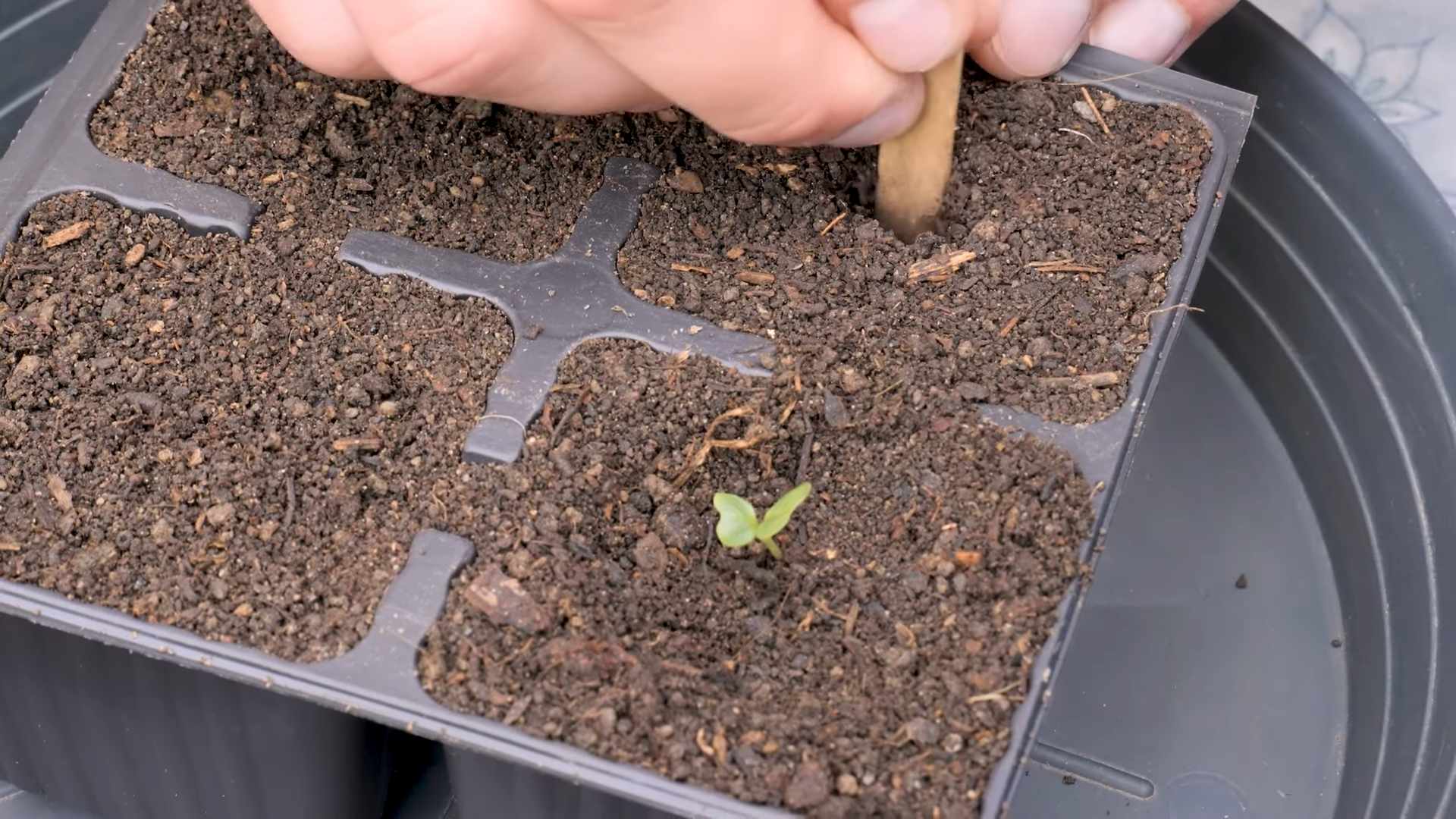
Conclusion
So, there you have it! Growing Romanesco cauliflower from seed might seem a little daunting at first, but with a little patience and the right approach, you can cultivate these stunning, fractal vegetables right in your own backyard. This DIY trick isn’t just about saving money (though that’s certainly a perk!); it’s about connecting with your food on a deeper level, understanding the growing process, and experiencing the immense satisfaction of harvesting something you nurtured from a tiny seed.
Why is this a must-try? Because store-bought Romanesco simply can’t compare to the flavor and freshness of homegrown. Plus, you get to choose exactly which variety you want to grow, experimenting with different colors and sizes. Imagine the vibrant green of a freshly picked Romanesco, its intricate spirals a testament to nature’s artistry. You won’t find that kind of quality or satisfaction at the grocery store.
Beyond the basic method, there are plenty of ways to personalize your Romanesco growing experience. Consider companion planting with herbs like rosemary or thyme to deter pests naturally. You could also experiment with different soil amendments to see how they affect the size and density of your heads. For those in warmer climates, try succession planting to extend your harvest season. And if you’re feeling adventurous, why not try growing Romanesco in containers? This is a great option for those with limited space or who want to protect their plants from extreme weather.
Don’t be afraid to experiment with different fertilizers, too. While a balanced fertilizer is generally recommended, you can adjust the nutrient ratios to encourage leaf growth early on and head development later in the season. Just remember to monitor your plants closely and adjust your approach as needed.
We truly believe that anyone can successfully grow Romanesco cauliflower from seed with a little dedication. The key is to start early, provide consistent care, and be patient. The rewards – both in terms of flavor and visual appeal – are well worth the effort.
So, what are you waiting for? Grab some Romanesco seeds, prepare your soil, and embark on this rewarding gardening adventure. We’re confident that you’ll be amazed by the results. And most importantly, we want to hear about your experience! Share your tips, tricks, and triumphs in the comments below. Let’s build a community of Romanesco growers and learn from each other. Happy gardening! Let us know how your **Romanesco cauliflower** growing goes!
Frequently Asked Questions (FAQ)
What is the best time to start Romanesco cauliflower seeds indoors?
The ideal time to start Romanesco cauliflower seeds indoors is typically 4-6 weeks before the last expected frost in your area. This allows the seedlings to develop a strong root system before being transplanted outdoors. Check your local frost dates to determine the appropriate timing for your region. Starting too early can result in leggy seedlings that are difficult to transplant, while starting too late may not give the plants enough time to mature before the weather gets too hot.
How much sunlight does Romanesco cauliflower need?
Romanesco cauliflower thrives in full sun, requiring at least 6-8 hours of direct sunlight per day. Adequate sunlight is crucial for healthy growth and the development of large, well-formed heads. If you’re growing Romanesco in a location that doesn’t receive enough sunlight, consider using grow lights to supplement the natural light. Insufficient sunlight can lead to stunted growth, smaller heads, and a less vibrant color.
What type of soil is best for growing Romanesco cauliflower?
Romanesco cauliflower prefers well-drained, fertile soil that is rich in organic matter. The ideal soil pH is between 6.0 and 7.0. Before planting, amend the soil with compost or well-rotted manure to improve drainage and fertility. Avoid heavy clay soils, as they can become waterlogged and hinder root development. If you have clay soil, consider adding sand or other amendments to improve drainage.
How often should I water Romanesco cauliflower?
Romanesco cauliflower requires consistent moisture, especially during head formation. Water deeply and regularly, aiming to keep the soil consistently moist but not waterlogged. The frequency of watering will depend on the weather conditions and soil type. In hot, dry weather, you may need to water daily, while in cooler, wetter weather, you can water less frequently. Use a soaker hose or drip irrigation to deliver water directly to the roots and avoid wetting the foliage, which can increase the risk of fungal diseases.
What are some common pests and diseases that affect Romanesco cauliflower?
Romanesco cauliflower is susceptible to several common pests and diseases, including cabbage worms, aphids, flea beetles, clubroot, and black rot. To prevent pest infestations, consider using row covers to protect the plants. Regularly inspect the plants for signs of pests and diseases, and take action promptly if you notice any problems. Organic pest control methods, such as insecticidal soap or neem oil, can be effective for controlling many common pests. To prevent diseases, ensure good air circulation around the plants and avoid overhead watering.
How do I know when Romanesco cauliflower is ready to harvest?
Romanesco cauliflower is typically ready to harvest when the head is firm, compact, and has reached its desired size. The exact size will depend on the variety, but most Romanesco heads are ready to harvest when they are about 6-8 inches in diameter. Check the head regularly for signs of maturity, such as a tight, well-formed spiral pattern. Harvest the head by cutting the stem just below the head, leaving a few leaves attached.
Can I grow Romanesco cauliflower in containers?
Yes, Romanesco cauliflower can be grown successfully in containers, provided you choose a large enough container and provide adequate care. Select a container that is at least 12 inches in diameter and 12 inches deep. Use a well-draining potting mix and ensure that the container has drainage holes. Water regularly and fertilize every few weeks with a balanced fertilizer. Container-grown Romanesco may require more frequent watering and fertilization than plants grown in the ground.
What are some good companion plants for Romanesco cauliflower?
Companion planting can help to deter pests, attract beneficial insects, and improve the overall health of your Romanesco cauliflower plants. Some good companion plants for Romanesco include:
* **Herbs:** Rosemary, thyme, sage, and dill can help to repel pests.
* **Flowers:** Marigolds and nasturtiums can attract beneficial insects and deter pests.
* **Vegetables:** Onions, garlic, and leeks can help to repel pests.
Avoid planting Romanesco cauliflower near other members of the brassica family, such as broccoli, cabbage, and kale, as they can attract the same pests and diseases.
How can I prevent my Romanesco cauliflower from bolting (going to seed)?
Bolting is a common problem with Romanesco cauliflower, especially in hot weather. To prevent bolting, choose bolt-resistant varieties, start seeds early in the season, and provide consistent moisture. Mulch around the plants to help keep the soil cool and moist. If you live in a hot climate, consider providing shade during the hottest part of the day.
What should I do if my Romanesco cauliflower head is not forming properly?
If your Romanesco cauliflower head is not forming properly, it could be due to several factors, including insufficient sunlight, lack of nutrients, or pest or disease problems. Ensure that the plants are receiving at least 6-8 hours of direct sunlight per day. Fertilize regularly with a balanced fertilizer. Inspect the plants for signs of pests and diseases, and take action promptly if you notice any problems. If the problem persists, consider consulting with a local gardening expert for further assistance.

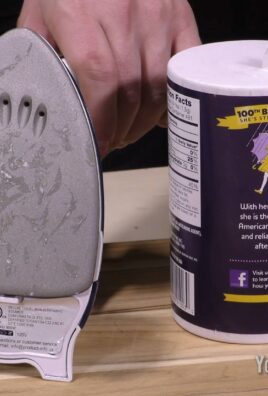
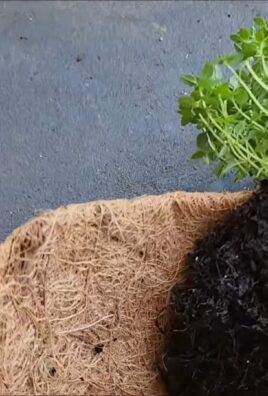
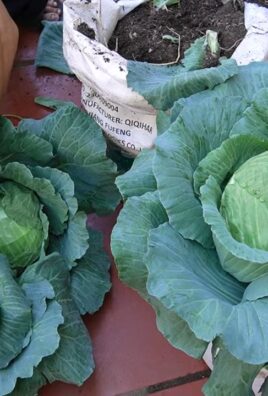
Leave a Comment